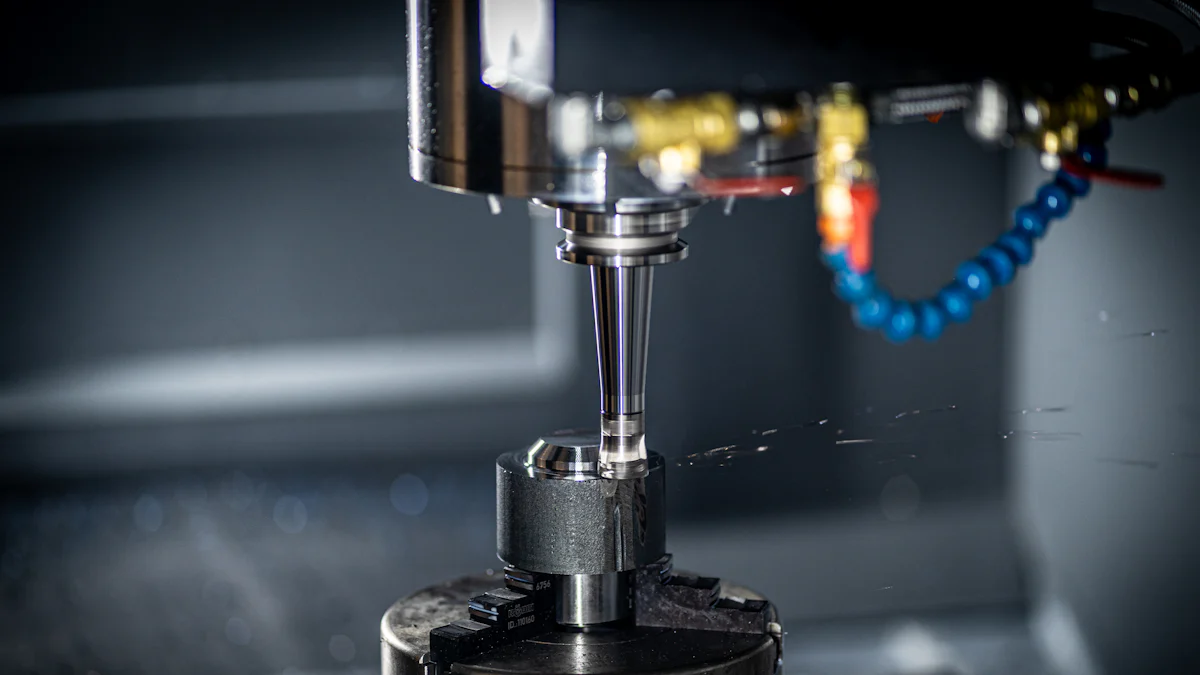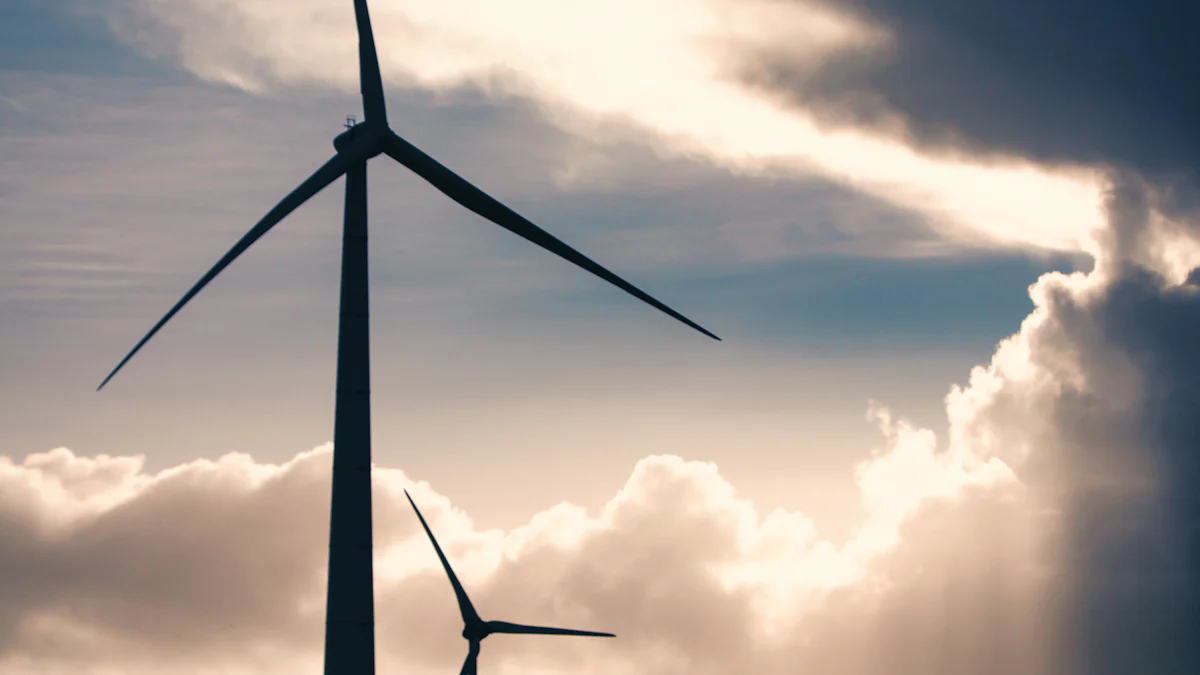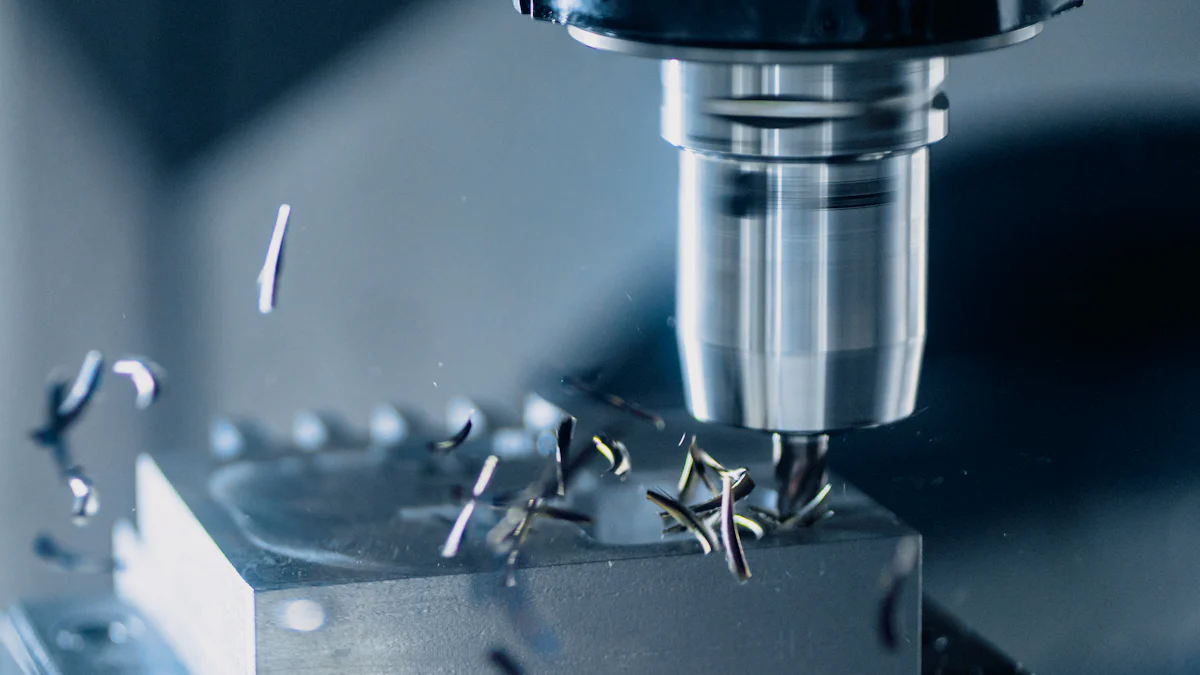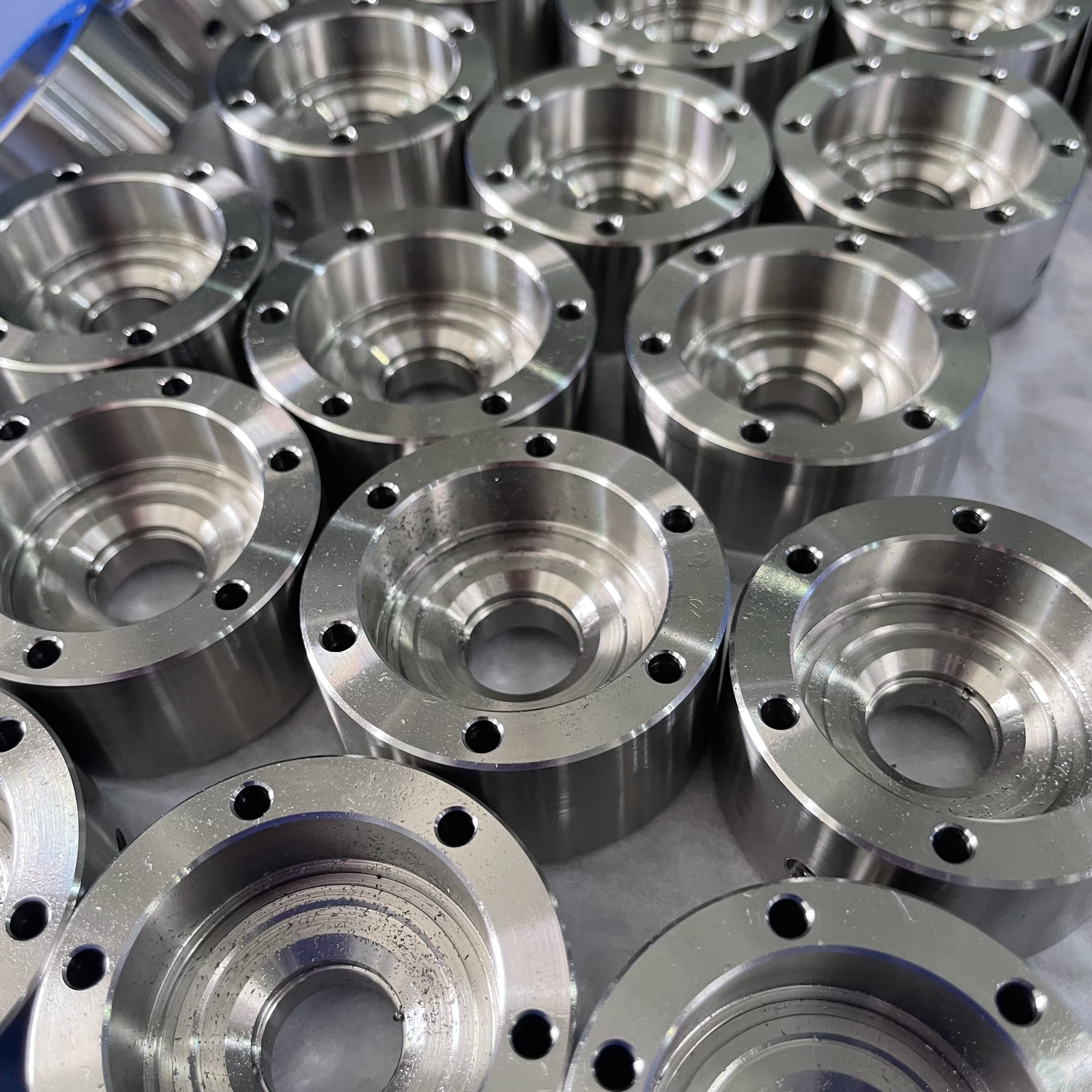CNC Machining for Renewable Energy Components

CNC machining plays a vital role in renewable energy innovation. You benefit from its ability to create precise and durable components, essential for systems like wind turbines and solar panels. This technology minimizes material waste, aligning with sustainability goals. Automated processes reduce production times and enhance efficiency. CNC machining also supports scalability, making it suitable for both large-scale and custom projects. Its reliability ensures fewer system failures, lowering maintenance needs. By enabling the production of complex parts, CNC machining drives the efficiency and sustainability of renewable energy technologies.
Key Takeaways
CNC machining helps make renewable energy parts with great accuracy. This is important for things like wind turbines and solar panels.
It reduces wasted materials and improves efficiency, supporting eco-friendly energy production goals.
CNC machining works for both ready-made and custom parts. This makes it cheaper and allows designs to fit specific project needs.
In the future, AI and 3D printing will make CNC machining even better for renewable energy use.
Picking the right CNC parts can save money and improve performance, giving the best results for energy projects.
Understanding CNC Machining and Its Role in Renewable Energy

What is CNC Machining?
Definition and core principles.
CNC machining, or Computer Numerical Control machining, is a manufacturing process where pre-programmed software controls the movement of tools and machinery. This technology allows you to create parts with exceptional precision and consistency. It operates by following digital instructions, ensuring every component meets exact specifications.
Several principles make CNC machining ideal for renewable energy applications:
Precision and Quality: You can produce components with tight tolerances, ensuring they perform reliably in demanding environments.
Complexity and Customization: The process supports intricate designs, enabling you to create tailored parts for specific energy systems.
Consistency and Scalability: CNC machining ensures uniform quality across all parts, whether for small prototypes or large-scale production.
Speed and Automation: Automated operations reduce errors and increase production speed, helping you meet growing energy demands.
Material Versatility: The technology works with various materials, ensuring durability in diverse conditions.
Key benefits: precision, efficiency, and scalability.
CNC machining offers unmatched precision, achieving tolerances that manual methods cannot replicate. This level of accuracy is essential for renewable energy systems, where even minor flaws can impact performance. The process also enhances efficiency by automating production, reducing waste, and minimizing errors. Additionally, CNC machining supports scalability, allowing you to produce components in both small and large volumes without compromising quality.
Why CNC Machining Matters for Renewable Energy
The demand for high-precision components in renewable systems.
Renewable energy systems rely on high-precision components to function effectively. For example, wind turbine blades require exact dimensions to maximize energy output. Hydroelectric turbines must withstand immense pressure, while geothermal systems need robust parts to endure extreme temperatures. CNC machining ensures these components meet strict standards, enhancing their performance and reliability. Its ability to produce consistent, defect-free parts also reduces maintenance costs and downtime.
How CNC machining supports sustainable manufacturing practices.
CNC machining aligns with the sustainability goals of renewable energy. Advanced machines consume less energy due to optimized processes and efficient motors. By minimizing material waste, CNC machining reduces the environmental impact of manufacturing. Facilities can even integrate renewable energy sources, such as solar panels or wind turbines, to power their operations. These practices make CNC machining a cornerstone of eco-friendly manufacturing in the renewable energy sector.
Key Applications of CNC Machining in Renewable Energy

Wind Energy Components
Manufacturing turbine blades, hubs, and gearboxes.
You rely on CNC machining to produce critical wind turbine components with unmatched precision. Turbine blades, for instance, require aerodynamic designs to maximize energy capture. CNC machining ensures these blades meet exact specifications, enhancing their efficiency. Gearboxes, another vital component, adjust rotational speeds with high accuracy. This process also fabricates nacelle components, which house essential turbine parts while maintaining strength and lightness. By using CNC machining, you can create durable and reliable parts that withstand harsh environmental conditions, ensuring long-term performance.
Ensuring efficiency and durability through precision.
CNC machining plays a key role in enhancing the efficiency and durability of wind turbines. The process produces intricate components like pitch bearings and generator parts with zero defects. These parts must endure extreme weather and operate reliably over time. By achieving tight tolerances, CNC machining ensures consistent accuracy, reducing maintenance needs and improving overall turbine performance. This precision makes it an indispensable tool for harnessing wind energy effectively.
Solar Energy Systems
CNC machining in solar panel frames and mounting systems.
Solar energy systems depend on CNC machining for the production of panel frames and mounting systems. These components require precise cutting, milling, and drilling to ensure proper alignment and secure mounting. Frames must withstand environmental stresses, such as wind and rain, while maintaining structural integrity. Mounting brackets and tracking systems, also created through CNC machining, allow solar panels to dynamically orient toward the sun. This precision ensures reliable performance and maximizes energy output.
Reducing costs and optimizing material usage.
CNC machining helps you reduce costs and optimize material usage in solar energy systems. Computer-controlled toolpaths minimize material waste, which is especially beneficial when working with expensive materials. The efficiency of CNC machines also lowers labor costs and energy consumption during production. These factors contribute to significant long-term savings while aligning with sustainability goals. By using CNC machining, you can create high-quality components that support the affordability and scalability of solar energy.
Hydropower and Emerging Technologies
CNC machining in turbines and generators for hydroelectric systems.
Hydropower systems rely on CNC machining to manufacture turbines and generators with high precision. Turbine blades, runners, and casings require intricate designs to achieve optimal profiles and surface finishes. CNC machining ensures these components meet exact specifications, enhancing their efficiency and durability. Gate valves and control mechanisms, essential for hydroelectric plant operations, also depend on this process for reliable performance under pressure. Multi-axis CNC milling machines are particularly effective for fabricating large hydropower components.
Applications in wave, tidal, and bioenergy technologies.
Emerging renewable technologies, such as wave and tidal energy systems, also benefit from CNC machining. These systems require custom components like turbine blades and generator parts, which must endure harsh marine environments. CNC machining enables you to create durable and efficient parts tailored to these unique applications. In bioenergy technologies, the process supports the production of precision-engineered components for biogas plants and other systems. This versatility makes CNC machining a cornerstone of innovation in renewable energy.
The Future of CNC Machining in Renewable Energy
Advancements in CNC Technology
5-axis machining for complex component production.
You can achieve exceptional precision with 5-axis CNC machining, which is crucial for renewable energy components. This technology allows for the creation of intricate parts, such as turbine nozzles and wind turbine blades, with tight tolerances. These components must endure harsh conditions while maintaining optimal performance. The ability to machine complex geometries in a single setup reduces production time and ensures consistent quality. This makes 5-axis machining a game-changer for renewable energy systems.
Integration of additive manufacturing (3D printing).
Combining CNC machining with additive manufacturing opens new possibilities for renewable energy. This integration enables you to produce lightweight yet durable parts with minimal material waste. For example, intricate designs for solar panel frames or wind turbine hubs can be created more efficiently. Additive manufacturing also complements CNC machining by allowing for rapid prototyping, which accelerates innovation in renewable energy technologies.
Advancement | Description |
|---|---|
Additive Manufacturing Integration | Enables the creation of intricate and robust parts, reducing waste and conserving resources. |
Precision Enhancement Technologies | Innovations like laser-guided cutting ensure greater accuracy, boosting system performance. |
Improved Energy Efficiency | Next-gen CNC machines consume less energy, aligning with sustainability goals. |
AI and Automation in CNC Machining
Enhancing efficiency and accuracy with AI.
Artificial intelligence enhances CNC machining by optimizing toolpaths and analyzing sensor data. This improves machining accuracy and reduces programming errors. AI also predicts part failures, allowing you to take corrective actions and minimize downtime. By 2035, AI is expected to boost productivity by 40%, making it a vital tool for renewable energy manufacturing.
Scaling production for renewable energy systems.
AI-driven automation scales production by enabling real-time adjustments to machining parameters. This ensures consistent quality and reduces scrap rates. Machine learning algorithms also support predictive maintenance, which lowers operational costs. These advancements make CNC machining more efficient and adaptable to the growing demands of renewable energy systems.
Benefit | Description |
|---|---|
Enhanced Predictive Maintenance | Anticipates maintenance needs, reducing downtime. |
Real-time Quality Control | Detects defects early, improving product quality. |
Sustainable Manufacturing Practices | Reduces environmental impact through flexible processes. |
Sustainable Materials and Practices
Using recycled and eco-friendly materials in CNC machining.
You can contribute to sustainability by using recycled and eco-friendly materials in CNC machining. High-strength alloys and composites, such as carbon fiber, are ideal for renewable energy components. These materials offer durability and lightweight properties, essential for wind turbines and solar panels. Aluminum and steel also play a significant role in creating robust and efficient systems.
Material Type | Application in Renewable Energy Components |
|---|---|
High-Strength Alloys | Used in offshore wind and hydro power projects for durability. |
Composites | Lightweight materials like carbon fiber for strength without weight. |
Aluminum | Commonly used in solar panel frames and wind turbine components. |
Innovations in material science for renewable energy components.
Material science innovations are transforming CNC machining. New composites and alloys improve the efficiency and lifespan of renewable energy systems. For instance, advanced materials reduce wear and tear on turbine blades, enhancing their performance. These developments ensure that CNC machining remains at the forefront of sustainable manufacturing.
Prefabricated vs. Custom CNC Parts for Renewable Energy
Prefabricated CNC Parts
Benefits: cost-effectiveness and standardization.
Prefabricated CNC parts offer significant advantages for renewable energy projects. Standardization simplifies the machining process, reducing the need for custom tooling. This approach allows you to purchase materials in bulk, lowering costs and minimizing waste. Additionally, prefabricated parts ensure consistent quality, which is essential for components like wind turbine hubs and solar panel frames.
Advantage | Description |
|---|---|
Precision and Quality | Prefabricated parts maintain high precision, ensuring durability in harsh conditions. |
Consistency and Scalability | These parts deliver uniform quality, making them ideal for large-scale renewable energy systems. |
Speed and Automation | Automated production reduces lead times, enabling faster project completion. |
Material Versatility | Prefabricated parts work with various materials, ensuring compatibility with diverse energy systems. |
Ideal for mass production in renewable energy projects.
Prefabricated CNC parts excel in mass production. Their standardized designs streamline manufacturing, allowing you to produce large quantities efficiently. This approach reduces production costs and ensures that every part meets the same high standards. For large-scale renewable energy installations, prefabricated parts provide a cost-effective and reliable solution.
Custom CNC Parts
Tailored solutions for unique energy systems.
Custom CNC parts allow you to address specific project requirements. These parts are engineered to meet unique configurations, enhancing system efficiency and longevity. For example, custom turbine nozzles improve energy conversion rates by maintaining tight tolerances. This level of precision ensures optimal performance, even in challenging environments.
Custom machining also supports innovative designs. You can create intricate geometries that standard parts cannot achieve. This flexibility enables you to develop renewable energy systems tailored to your operational needs, reducing downtime and improving overall performance.
Enhanced compatibility and performance.
Custom CNC parts enhance compatibility by aligning with the exact specifications of your energy system. This precision minimizes material waste and boosts efficiency.
Custom parts accommodate unique configurations, improving system adaptability.
Tailored designs increase the lifespan of renewable energy components.
Precision machining ensures optimal functionality, even under extreme conditions.
By investing in custom parts, you can achieve superior performance and long-term reliability for your renewable energy projects.
Choosing the Right Option
Factors to consider: project scale, budget, and technical needs.
When deciding between prefabricated and custom CNC parts, consider your project’s scale and budget. Prefabricated parts suit large-scale projects where cost-effectiveness and standardization are priorities. Custom parts, on the other hand, are ideal for smaller or specialized systems requiring unique designs.
Balancing cost and performance for optimal results.
You must balance cost and performance to achieve the best results. Prefabricated parts offer affordability and consistency, while custom parts provide tailored solutions and enhanced efficiency. By evaluating your technical needs and long-term goals, you can choose the option that aligns with your renewable energy objectives.
CNC machining drives renewable energy innovation by enabling precise, efficient, and sustainable manufacturing. You benefit from its applications in wind, solar, and hydropower technologies, where it produces durable components like turbine blades and solar panel frames. This process minimizes waste and supports sustainability goals. Future advancements, such as AI integration and additive manufacturing, will enhance its role in green energy. By combining prefabricated and custom solutions, you can ensure adaptability and efficiency in renewable energy projects, meeting both current demands and future challenges.
FAQ
What makes CNC machining suitable for renewable energy components?
CNC machining delivers unmatched precision and consistency. You can create durable parts that meet strict specifications, essential for renewable energy systems. Its ability to handle complex designs and various materials ensures compatibility with wind, solar, and hydropower technologies. This makes it a reliable choice for green energy manufacturing.
How does CNC machining reduce material waste?
CNC machining uses computer-controlled toolpaths to cut materials efficiently. This minimizes excess material and ensures optimal usage. You can also recycle leftover materials, further reducing waste. These practices align with sustainability goals, making CNC machining an eco-friendly manufacturing process for renewable energy components.
Can CNC machining handle large-scale renewable energy projects?
Yes, CNC machining supports scalability. You can produce components in high volumes without compromising quality. Prefabricated parts streamline mass production, while custom parts address specific needs. This flexibility makes CNC machining ideal for both large-scale installations and specialized renewable energy systems.
What materials work best for CNC machining in renewable energy?
High-strength alloys, composites, aluminum, and steel are commonly used. These materials offer durability, lightweight properties, and resistance to harsh conditions. You can choose materials based on your project’s requirements, ensuring optimal performance and longevity for renewable energy components.
How does AI improve CNC machining for renewable energy?
AI optimizes toolpaths, predicts part failures, and enhances accuracy. You can use AI-driven automation to scale production and reduce errors. These advancements improve efficiency and lower costs, making CNC machining more adaptable to the growing demands of renewable energy systems.
See Also
Streamlined CNC Machining Solutions for Accurate Production
Grasping CNC Machining Techniques for Flashlight Parts
Excelling in CNC Machining for High-Precision Components
Investigating CNC Machining Options for Accurate Manufacturing
CNC Precision Component Processing: Impacting Production Expenses
About US
Follow Us
Your prototype holds unparalleled significance, and we deeply value its uniqueness. Collaborating with you during the preparation phase for running your prototype or parts is a commitment we gladly embrace. Whether it's a single part or a complex assembly, we are dedicated to selecting the optimal tools and pathways to bring your envisioned product to life.
At Precision Fab CNC Machining, we specialize in producing parts for prototypes, short runs, and high-volume production. Our prototyping machine capabilities extend across metal, plastic, and wood machining, with welding fabrication services available to complement and finalize your prototype if required.
Address
Address: Room320 10F, Building A,Nanshan international building, Dayawan District, Huizhou, Guangdong, 516001 China
Contacts
billy@timaycnc.com

